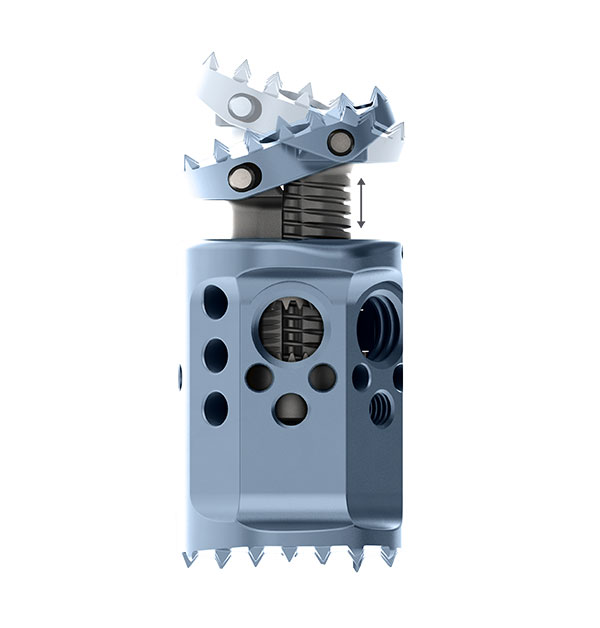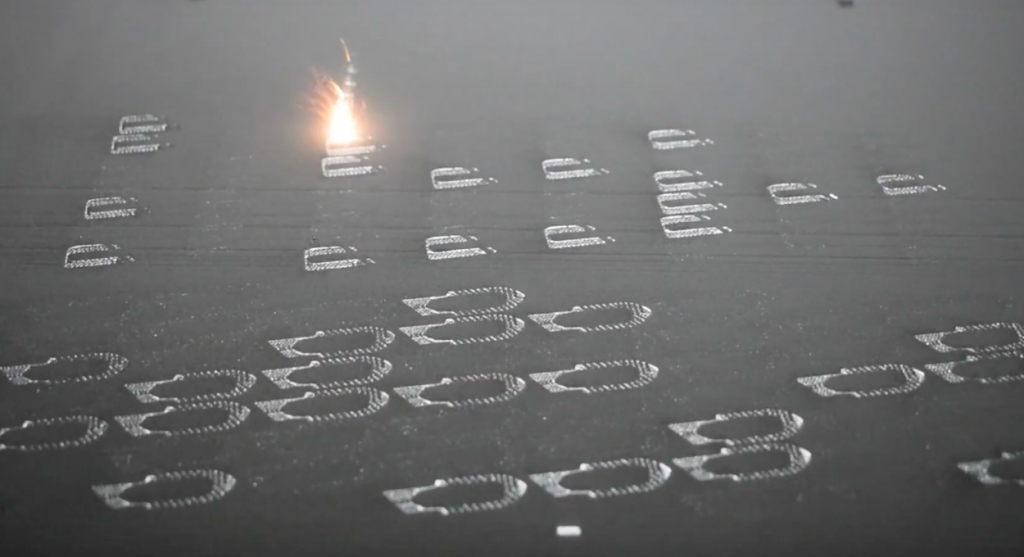Medical technology company K2M has announced the first operation involving its CAPRI Cervical 3D Expandable Corpectomy Cage System, together with a Conformité Européene (CE) Marking for the technology.
The SLM 3D printed titanium implant, which is capable of expanding once in situ and can be surgically placed along a number of angles, was successfully used in an operation at Rigshospitalet in Denmark.
A post-VCR spinal support structure
The CAPRI Cervical 3D Expandable Corpectomy Cage System is an implant that stabilizes the spine after a Vertebral Column Resection (VCR). This refers to the removal of a vertebra due to a natural, or injury-induced spinal deformity.
After a surgeon realigns the spine using pedicle screws and rods, an implant must take the place of the excised vertebra and stabilize it in its new position. This can take the form of a “strut graft” (a solid piece of bone from the thigh) or a cage like the CAPRI.

CAPRI expands physically and figuratively
CAPRI is, like other cages, a porous implant that can accommodate the growth of bone graft. Unlike others, however, it is SLM 3D printed using K2M’s Lamellar 3D Titanium technology.
This allows the incorporation of complex internal geometries and a customised rough surface architecture, which preclinical data has shown to accelerate bone growth throughout the entirety of the cage and are impossible with traditional manufacturing.
Additionally, given its design, both the angle and the endplates of the CAPRI can be adjusted in-situ according to the particular curve deformities. It features fixed endplate angulation of 0°, 5°, and 10°, adjustable according to surgical preference. Importantly, the CAPRI can adjust in-situ according to the height expansion of the patient.
Martin Gehrchen, who performed the surgery with Lars Valentin at Rigshospitalet, praised the combination of 3D printing and continuous adjustment, stating that “using the CAPRI…we were able to dial in a precise height and lordotic angle in-situ while also utilizing a 3D-printed device designed to allow for bony integration.”

No bones about it, a successful CE application
The successful procedure means that the CAPRI is the world’s first 3D-printed expandable device that facilitates continuous in-situ height expansion and endplate angulation in the cervical spine. With its new CE Marking, The CAPRI is fully compliant with EU standards, bringing the Virgina-based company’s product to a wider market.
The announcement follows the FDA approval of K2M’s MOJAVE spinal implant earlier this year and it will enable K2M to compete with Germany’s EIT and its Cellular Titanium range of 3D printed spinal supports.
“We are pleased to receive a CE Mark for our CAPRI Cervical 3D Expandable Cage System,” said K2M CEO Eric Major, “which reinforces our commitment to excellence in 3D-printed spinal innovation and the further integration of expandable technologies across our comprehensive complex spine, minimally invasive, and degenerative product portfolios.”
Nominations for the second annual 3D Printing Industry Awards are now open. Make your selections now.
For more information, 3D printing and medical technology, subscribe to our free 3D Printing Industry newsletter, follow us on Twitter, and like us on Facebook.
Featured image shows a render of the CAPRI in place. Image via Youtube/K2M.

